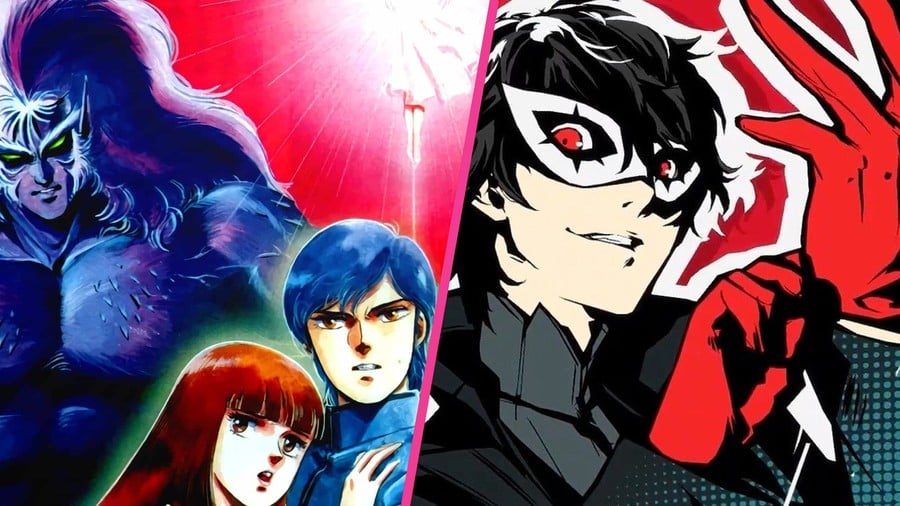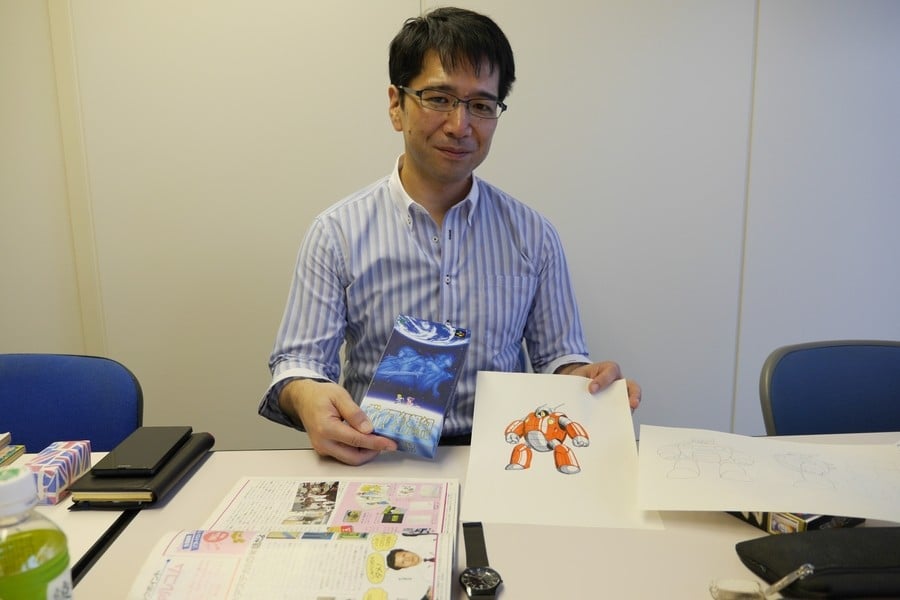
As part of our end-of-year celebrations, we're digging into the archives to pick out some of the best Time Extension content from the past year. You can check out our other republished content here. Enjoy!
In June, it was announced that Persona 3 Portable, Persona 4 Golden, and Persona 5 Royal were heading to Xbox One and PC; it was then announced the series was also heading to PlayStation and Steam. Now Atlus has tweeted a firm release date of 19 January 2023.
Anyone who is a fan of Atlus' flagship series will be excited by this. As most know, Persona is one of several spin-offs from the Megami Tensei series, and forms part of what is affectionately referred to the "Megaten Universe". This umbrella term comprises a bewildering number of titles; MobyGames lists 175 distinct entries, not counting similar cross-system ports (the original on PC-88, FM-7, MSX, and Sharp X1 are classed as one entry); Hardcore Gaming 101 currently has 18 pages attempting to cover every game.
What's especially interesting is the origin of the Megaten Universe, which started with a trilogy of sci-fi horror books by Aya Nishitani. There's almost zero information about these in English online, though one fan has taken to translating them.
The books were successful in Japan and became adapted into anime and video games. This much is well documented already, but what's less understood is why the video game adaptation began with two seeds, both titled Digital Devil Story: Megami Tensei: the Nihon Telenet action game for home computers PC-88, FM-7, MSX, and Sharp X1 (July 1987 on PC-88), and the Atlus RPG for Famicom (September 1987). These were two entirely different games based on the same source material; Atlus' version spawned the Megaten Universe, Telenet's was soon forgotten.
Enter Kouji Yokota, head of developer Shade, whose early portfolio seems to epitomise the best of the 16-bit era, having done graphics and design work on: Valis, Megami Tensei, Exile, Gaiares, ActRaiser, Soul Blazer, Illusion of Gaia, Robotrek, Lunar: Eternal Blue, and Granstream Saga. In an interview for The Untold History of Japanese Game Developers, he detailed his role working on the PC-88 version of Megami Tensei.
"That's the one," confirms Yokota, gesturing to a rare PC-88FH Black computer, which he'd set up for the interview. "There's also a Famicom version, which was an entirely different game developed by Atlus. I was in charge of monster graphics for the PC-88 version by Nihon Telenet."
The Telenet computer versions play like a poor Gauntlet clone with a few gimmicks added. You wander mazes fighting monsters and collecting power-ups, while keeping an eye on the moon's cycle which affects items and enemy strength. There's also a map, currency, merchants, and weapon augments. Less an RPG, more an action game with bells on. It doesn't matter whether you're playing the PC-88 or MSX version, they're all choppy, clunky, and not especially great. There's not been a lot of attempts to play through them online, thankfully Youtuber Marsh saves you the trouble. But how did Telenet get the license, and how come its game was so utterly different to Atlus' version?
"I had just joined the company at the time," explains Yokota. "When licenses to make game versions of the Megami Tensei novel were simultaneously acquired by Atlus (Famicom version) and Nihon Telenet (computer versions), the companies wanted to avoid the stereotypical genres of each system - action games on the Famicom, role-playing games on home computers. Around this time Atlus and Nihon Telenet were in contact with each other, so they each ventured into the opposite genre. I don't know if this was because of instructions from the original author or a voluntary staking out of territory by the two companies. When Telenet later started developing for the Famicom, we received a brief orientation session from an Atlus employee." This is a megaton revelation about Megaten.
Both companies, Atlus and Telenet, were still in comparative infancy at this time, having only been around for a few years and not yet having created much that was noteworthy. Telenet had developed Valis, which became a successful series, but Atlus' had seemingly only made two games by this point: space RPG Ginga Denshou: Galaxy Odyssey, and a mediocre Famicom adaptation of the Jim Henson / David Bowie film, Labyrinth. Released in January 1987, Labyrinth was repetitive, difficult and never left Japan, but it has its fans. Ironically it's also a Gauntlet clone, much like Telenet's version of Megami Tensei. Gauntlet came out in 1985 and was hugely successful, so naturally had imitators.

It's fascinating to consider that because the two companies wanted to buck the trends of the era, Atlus ended up creating a Megami Tensei RPG instead of another Gauntlet clone. Even though Dragon Quest came out in 1986, computers were still the domain for RPGs at that point. It's conceivable that, had Atlus made an action game instead, it might have been similar to Labyrinth and the evolution of Megaten as we know it would never have taken place.
So when you're playing Person on modern systems this January, pause to consider that history very nearly went in a different direction. If Telenet had made an RPG for computers, and Atlus had made an action game for the Famicom – as was the custom at the time – how different would the global landscape be today? Would Atlus even still exist without the series that made it famous? Would Telenet have grown stronger and still be around now? Sometimes it pays to break out of the restriction of expectation and try something different.
Please note that some external links on this page are affiliate links, which means if you click them and make a purchase we may receive a small percentage of the sale. Please read our FTC Disclosure for more information.






Comments 5
I’m glad persona exists but really wish that SMT games were given the same level of push/polish. The last few SMT games were great but it’s obvious that Atlus focuses on the more popular franchise.
Has been and will be also released on Nintendo Switch. Was a bit of a petty deal from Xbox with Atlus to announce it first for Xbox. As we all know Atlus loves money and will suck it out of any gamer they can. Admittedly Persona 3 Portable, Persona 4 Golden and Persona 5 Royal are fantastic games.
The original Megami Tensei for the Famicom absolutely had some rough points of its own.
But why feel embarrassed about Illusion of Gaia? I wore that T-shirt to school probably every day for a couple years.
Man I wish the whole series had made it to Europe back then, the younger me would've loved them.
It seems a lot of them have been translated nowadays, maybe I'll look into trying some out.
@KingMike It probably doesn't come across in the photo and caption, but he was embarrassed not about the quality of the games (his portfolio is mostly great), rather he expressed embarrassment - and surprise! - that anyone remembered or cared about these old games, or would want to interview him. The majority of the devs I spoke with did not realise anyone outside of Japan even liked their games, and they had kind of forgotten about them - not all, but most I would say. Many of them also ended up being promoted into managerial roles, so it probably felt a bit weird discussing stuff from their earliest days, 20+ years ago.
Show Comments
Leave A Comment
Hold on there, you need to login to post a comment...